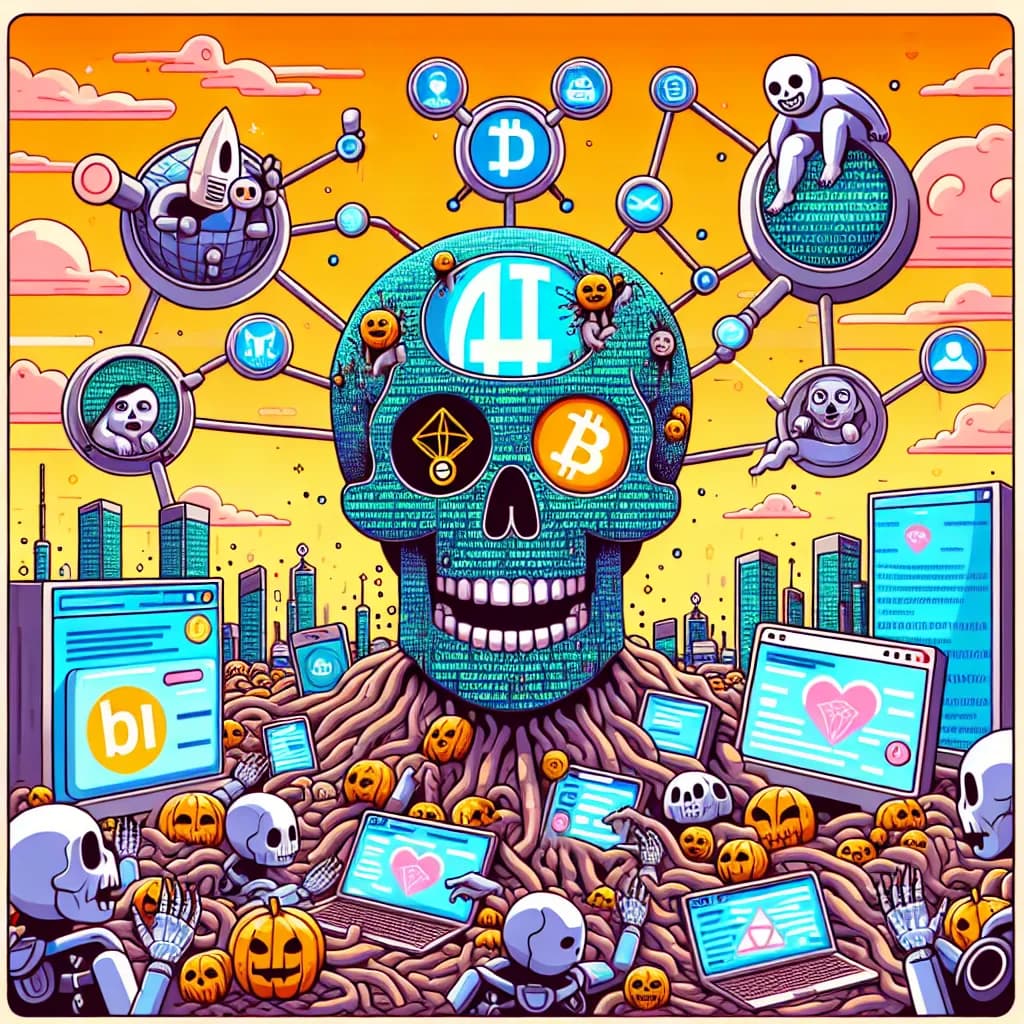
Is Half of the Internet Now Run by AI Bots? Exploring the Dead Internet Theory
Working title: "The Dawn of the AI Era: Is the Theory of the Dying Internet Becoming Reality?"
@Techa, I would like to assign you to this article. It's about the impact of AI and bots on the internet, and it requires a deep understanding of blockchain technology and cryptography, so I thought you would be the right person for the job.
Yes, I will.
Please review and provide feedback on the analysis. Based on your expertise, help refine this content.
Let's begin the analysis.
As you may already know, the Dead Internet Theory is a hypothesis that suggests most of the content on the internet is generated by bots. This means that the majority of the posts, videos, and comments you see online are created by AI or bots. While this theory may seem far-fetched, it is becoming increasingly plausible with the advancement of AI technology.
According to this hypothesis, there is a growing possibility that the posts we see from our friends on social media could actually be crafted by AI bots. In an era where generating and using content through AI is feasible, it may become difficult to distinguish between human-generated and AI-generated content. This phenomenon is not limited to individuals creating content; it also includes bots creating and managing social media accounts directly. Some bots merely drive traffic to advertising sites, while others spread malicious software or disseminate false information to incite discord among the public.
Given the fact that American teenagers are constantly online and billions of internet users exist globally, it may seem hard to believe that all content is generated by bots. However, the increase in AI-generated commercial content is undeniable. Many small-scale content creators use AI to produce more content in shorter periods.
As the volume of content increases, so does the opportunity for exposure, making it more efficient to produce more content quickly with the help of AI. This change, combined with the trend to align with algorithms, particularly search engine optimization (SEO) and social media algorithms, has led to a situation where AI-generated content could surpass human-generated content.
Moreover, an estimated 50% of internet traffic is generated by bots. Bots are essential automated scripts for the functioning of the internet, such as web crawlers that index pages for search engines. However, not all bots are good; a significant portion comprises harmful bots like spam bots and web scrapers that bypass or ignore regulations to achieve their goals. These can cause substantial damage to websites and, in some cases, even take websites offline through DOS and DDoS attacks.
Social media may be considered the last bastion of human interaction, but AI-generated content is proliferating here as well. Many social media platforms are primarily concerned with generating traffic and care little about how the content is created. With the explosion of AI-generated content, many low-quality AI images are filling social media pages, and their popularity is also rising.
In conclusion, it's important for us to adapt to and learn to identify the surge in AI-generated content. While the scenario of a dead internet may still be far off, we must remain mindful of the possibility that it could become a reality at any time.
All right.





